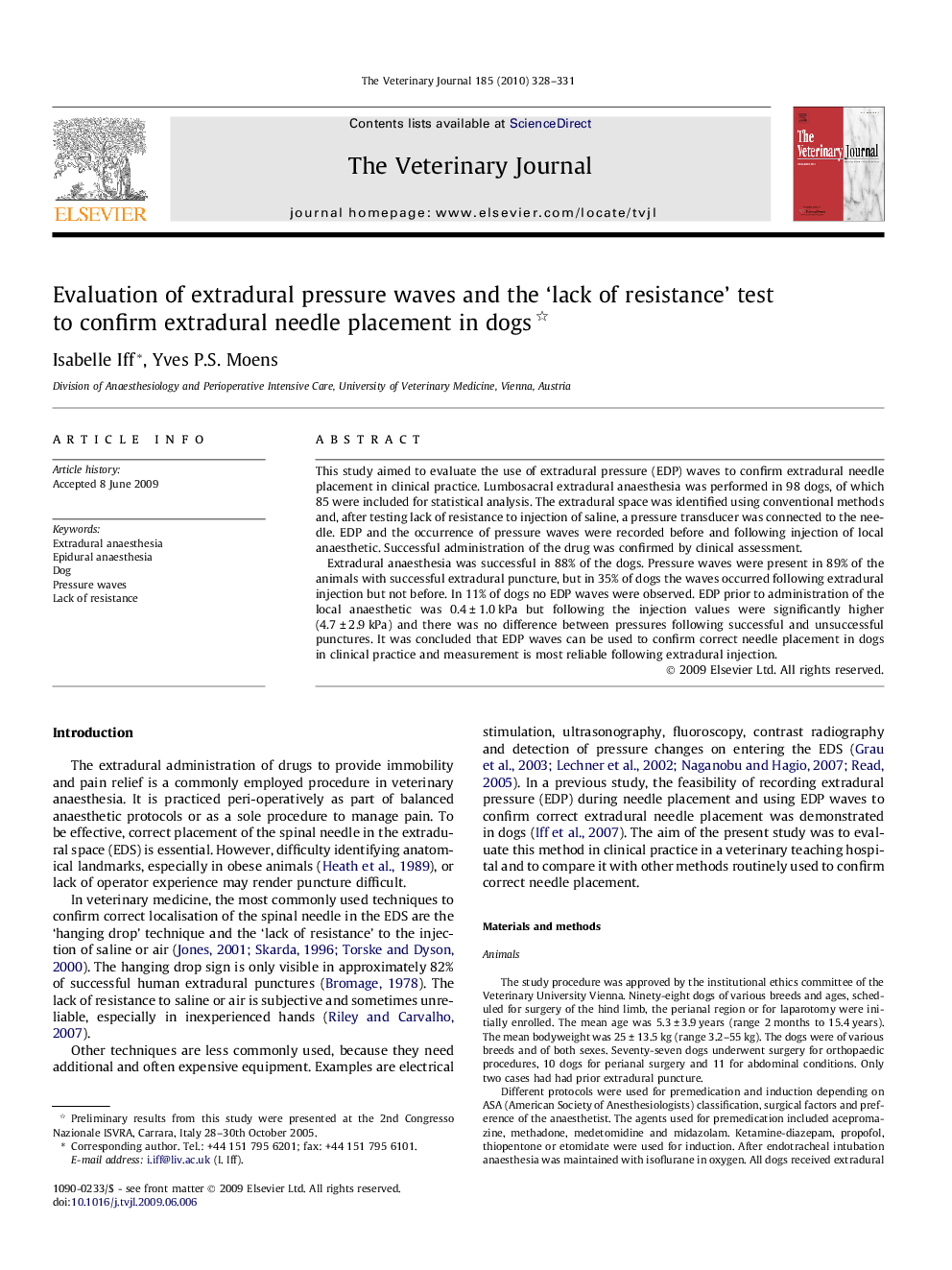| Article ID | Journal | Published Year | Pages | File Type |
|---|---|---|---|---|
| 2465136 | The Veterinary Journal | 2010 | 4 Pages |
This study aimed to evaluate the use of extradural pressure (EDP) waves to confirm extradural needle placement in clinical practice. Lumbosacral extradural anaesthesia was performed in 98 dogs, of which 85 were included for statistical analysis. The extradural space was identified using conventional methods and, after testing lack of resistance to injection of saline, a pressure transducer was connected to the needle. EDP and the occurrence of pressure waves were recorded before and following injection of local anaesthetic. Successful administration of the drug was confirmed by clinical assessment.Extradural anaesthesia was successful in 88% of the dogs. Pressure waves were present in 89% of the animals with successful extradural puncture, but in 35% of dogs the waves occurred following extradural injection but not before. In 11% of dogs no EDP waves were observed. EDP prior to administration of the local anaesthetic was 0.4 ± 1.0 kPa but following the injection values were significantly higher (4.7 ± 2.9 kPa) and there was no difference between pressures following successful and unsuccessful punctures. It was concluded that EDP waves can be used to confirm correct needle placement in dogs in clinical practice and measurement is most reliable following extradural injection.
